
Art | Resources
Faribault Mill
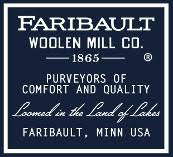 The classic 100% wool blanket in many styles and colors. “Today, in a historic mill nestled along the Cannon River in Minnesota, a nearly 150-year-old story is still being woven. The Faribault Woolen Mill endures as one of the last vertical woolen mills in America. Here, fifth generation craftspeople take raw wool and create blankets, throws, scarves and accessories of remarkable comfort and quality. Irreplaceable century-old machinery stands side by side with modern technology in our “new” mill, which was built in 1892.” Be sure to see The Art of Wool.
The classic 100% wool blanket in many styles and colors. “Today, in a historic mill nestled along the Cannon River in Minnesota, a nearly 150-year-old story is still being woven. The Faribault Woolen Mill endures as one of the last vertical woolen mills in America. Here, fifth generation craftspeople take raw wool and create blankets, throws, scarves and accessories of remarkable comfort and quality. Irreplaceable century-old machinery stands side by side with modern technology in our “new” mill, which was built in 1892.” Be sure to see The Art of Wool.
Living Tree Community Foods
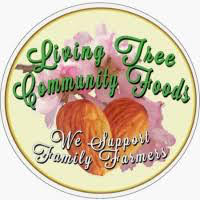 A reader recommended this website to me for their high quality of food products. While you will find the usual oils and vinegars, chocolates, nuts and seeds and their butters, grains and pastas, honey and sweeteners, what is unusual about these foods is they are all chosen and processed with the guideline of supporting family farmers and keeping the food alive. You’ll find such foods as California-grown heritage olive oil, unusual varieties of honey alive and unfiltered, and polenta made from Organic Dakota Black Heirloom Corn.
A reader recommended this website to me for their high quality of food products. While you will find the usual oils and vinegars, chocolates, nuts and seeds and their butters, grains and pastas, honey and sweeteners, what is unusual about these foods is they are all chosen and processed with the guideline of supporting family farmers and keeping the food alive. You’ll find such foods as California-grown heritage olive oil, unusual varieties of honey alive and unfiltered, and polenta made from Organic Dakota Black Heirloom Corn.
Shields Dates
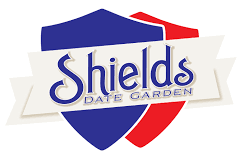 When Larry and I were driving across the USA from Florida to California, we drove right through the famous date growing region of Coachella Valley, so we had to stop for dates. Shields has 10 varieties of dates and if you stop at their date garden you can sample every one of them. They sell natural and organic dates and date products, including their own “date crystals” date sugar.
When Larry and I were driving across the USA from Florida to California, we drove right through the famous date growing region of Coachella Valley, so we had to stop for dates. Shields has 10 varieties of dates and if you stop at their date garden you can sample every one of them. They sell natural and organic dates and date products, including their own “date crystals” date sugar.
Wood Cabinets for Less
 I found this website while looking for quick delivery for a client on solid wood cabinets. I was surprised and very pleased at the very low price. Like a whole kitchen of cabinets for $3000. At the top end you can get solid wood cabinets with solid doors and sides, but they cost even less if you get cabinet grade plywood for the sides. You can even order them unfinished. Choose your style and wood and finish. Staff is very knowledgeable and will help you find what you are looking for from their selection. Look here first for kitchen and bath cabinets.
I found this website while looking for quick delivery for a client on solid wood cabinets. I was surprised and very pleased at the very low price. Like a whole kitchen of cabinets for $3000. At the top end you can get solid wood cabinets with solid doors and sides, but they cost even less if you get cabinet grade plywood for the sides. You can even order them unfinished. Choose your style and wood and finish. Staff is very knowledgeable and will help you find what you are looking for from their selection. Look here first for kitchen and bath cabinets.
Mary’s Chickens | Mary’s Turkeys | Mary’s Ducks
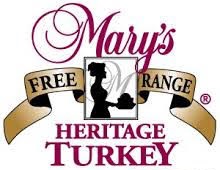 I recently moved to Sebastopol, California, where there is a cute restaurant called HipChicks Farms, where they sell organic chicken fingers, chicken pot pies, and other chicken comfort foods. I asked them where they sourced their chicken and they said “Mary’s” with due respect in their tone of voice. I have to say, it was delicious chicken. Go to Mary’s website and you’ll find pasture raised chicken, heirloom chicken, organic chicken, no styrofoam packaging and special programs to protect the welfare of the animals. Same for turkeys, same for ducks. Family owned and operated since 1954.
I recently moved to Sebastopol, California, where there is a cute restaurant called HipChicks Farms, where they sell organic chicken fingers, chicken pot pies, and other chicken comfort foods. I asked them where they sourced their chicken and they said “Mary’s” with due respect in their tone of voice. I have to say, it was delicious chicken. Go to Mary’s website and you’ll find pasture raised chicken, heirloom chicken, organic chicken, no styrofoam packaging and special programs to protect the welfare of the animals. Same for turkeys, same for ducks. Family owned and operated since 1954.
Woman Within
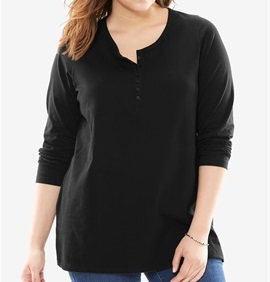 Basic cotton clothing for plus size women, including soft cotton tees in all sleeve lengths and many colors, cotton denim pants and skirts, cotton corduroy pants and skirts. Many colors in basic designs. Clothing comes with a slight odor from sizing that washes out. Garments are cut loose and comfortable. Though this clothing is not organic, it is affordable and reliable. But choose carefully because natural fiber items are mixed in with many synthetics. Search the website for “cotton” to easily find cotton clothing.
Basic cotton clothing for plus size women, including soft cotton tees in all sleeve lengths and many colors, cotton denim pants and skirts, cotton corduroy pants and skirts. Many colors in basic designs. Clothing comes with a slight odor from sizing that washes out. Garments are cut loose and comfortable. Though this clothing is not organic, it is affordable and reliable. But choose carefully because natural fiber items are mixed in with many synthetics. Search the website for “cotton” to easily find cotton clothing.
Amana Woolen Mill
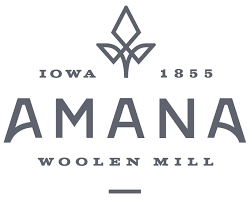 Though the name says “woolen mill,” today Amana makes and sells high quality 100% cotton products for the home: blankets & throws, table and kitchen linens. Plus heavy duty totes made from reclaimed cotton yarn and fabric with full grain leather handles. “We are a community of families, farmers and artisans that are nearly as old as Iowa itself. Quality craftsmanship isn’t a coincidence, it’s second nature. Our textiles are woven in the same building that was first used more than a century and a half ago…The exacting methods used today were brought from the old world by Amana’s first settlers, while the pioneering spirit of those first families continues to drive new innovations.”
Though the name says “woolen mill,” today Amana makes and sells high quality 100% cotton products for the home: blankets & throws, table and kitchen linens. Plus heavy duty totes made from reclaimed cotton yarn and fabric with full grain leather handles. “We are a community of families, farmers and artisans that are nearly as old as Iowa itself. Quality craftsmanship isn’t a coincidence, it’s second nature. Our textiles are woven in the same building that was first used more than a century and a half ago…The exacting methods used today were brought from the old world by Amana’s first settlers, while the pioneering spirit of those first families continues to drive new innovations.”
Mountain Meadow Wool
 “100% American made and Wyoming grown, high-quality wool products and yarn, created with eco-friendly operations and fair prices for ranchers.” Purchase yarn and fiber for your own creations, blankets woven at the Faribault mill, and wool hoodies, hats, gloves, and mittens. All are variegated natural colors of the sheep wool.
“100% American made and Wyoming grown, high-quality wool products and yarn, created with eco-friendly operations and fair prices for ranchers.” Purchase yarn and fiber for your own creations, blankets woven at the Faribault mill, and wool hoodies, hats, gloves, and mittens. All are variegated natural colors of the sheep wool.
D’Artegnan
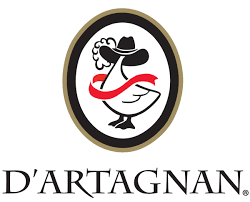 Many types of meat, poultry and game, all natural or organic. Also heritage breeds and wild.You’ll find everything here from chicken to wild boar. Plus charcuterie and sausage. “We believe food raised right tastes better. Before such buzz words existed, and for more than 30 years, D’Artagnan has been committed to free-range, natural production and sustainable, humane farming practices.”
Many types of meat, poultry and game, all natural or organic. Also heritage breeds and wild.You’ll find everything here from chicken to wild boar. Plus charcuterie and sausage. “We believe food raised right tastes better. Before such buzz words existed, and for more than 30 years, D’Artagnan has been committed to free-range, natural production and sustainable, humane farming practices.”
Want a Turkey Worth Gobbling? Here’s What to Look for on the Label
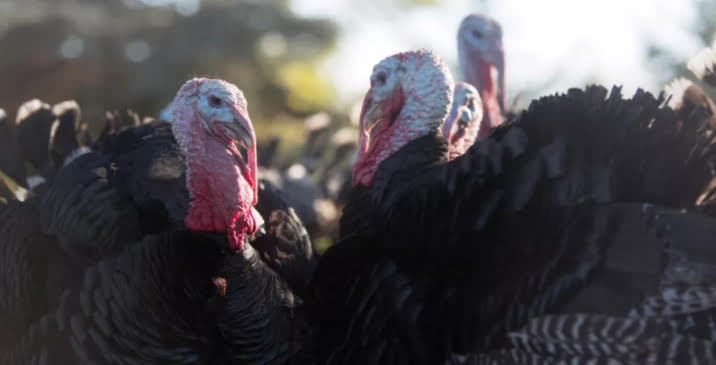
A couple of nights ago around the dinner table I asked my new family what everyone wanted for Thanksgiving dinner. Turkey, of course, homemade cranberry sauce, and gluten-free cornbread and rice stuffing with wild mushrooms topped the list. Since, as the best cook in the house, I’ll be doing most of the cooking, and we are living in Sonoma County, California—where we actually grow and raise some of the best food on Earth—I started wondering if we could get some kind of special turkey.
So I put together this list of what to look for on the label to help me find the perfect turkey for this year’s Thanksgiving dinner.
Here’s What You Get When You Buy a Cheap Turkey
The first thing to know about cheap turkeys is they are a hybrid breed that have been created to produce a lot of breast meat “Broad-breasted White” they are called. These turkeys are now so large that all are artificially inseminated because they simply can’t do it themselves.
They are also so big they cannot walk.
They are also bred to grow faster than the natural turkey and are give growth hormones.
These turkeys are raised in factory farms in overcrowded conditions.
Their feed is made from GMO corn and soy that has been sprayed with pesticides.
Excessive quantities of antibiotics are given to birds, and other chemicals may be used in processing.
PENN STATE EXTENSION: Modern Turkey Industry.
All Natural Turkeys
The word “natural” on the label of a turkey refers to how a turkey is processed, not raised.
A product can be claimed natural if it is minimally processed and contains no artificial ingredients, including chemical preservatives.
The United States Department of Agriculture (USDA) has a definition of “natural” that pertains to turkeys (and all meats)
According to the USDA, “all natural” meats and poultry can only be called such when:
- No animal by-products were fed to the animals
- No growth promotants were administered to the animals
- No antibiotics are used (except for ionophores used as coccidiostats for parasite control)
The USDA only approves phrases including “raised without antibiotics,” “no added antibiotics” or “no antibiotics ever,” which indicate the animal did not receive antibiotics in their feed, water or by injection. The phrase “antibiotic-free” is not approved for meat and poultry labels.
Natural turkeys are hybrid Broad-breasted Whites and the meat would still have pesticide residues from their feed, Most are fed a “vegetarian” feed made up of GMO corn and GMO soy. But “all natural” is a step in the right direction.
Your local natural food store will certainly carry an all-natural turkey and you might find them in some higher-end markets as well. They are slightly more expensive than the cheap turkeys and a good choice if you can’t afford organic.
Organic Turkeys
Once again, organic turkeys are hybrid Broad-breasted Whites. The difference with organic is they are raised with certified USDA organic practices, so the meat is free from hormones and other growth regulators, antibiotics, GMOs and pesticides. They are usually farm raised and often drink well water.
Most natural food stores sell organic turkeys. They are twice the price of natural turkeys.
Heritage Turkeys
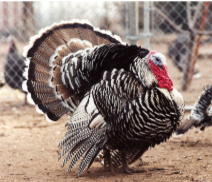 A heritage turkey is one of eight specific breeds certified by the American Poultry Association. These breeds were raised in the USA prior to the 1950s, when the poultry industry began to cross breeding the commodity Broad-breasted White turkeys that are commonly sold today.
A heritage turkey is one of eight specific breeds certified by the American Poultry Association. These breeds were raised in the USA prior to the 1950s, when the poultry industry began to cross breeding the commodity Broad-breasted White turkeys that are commonly sold today.
“Heritage” does not mean organic, all natural, or free range, though a true heritage bird should be free of artificial ingredients, raised on a farm and eat feed free from pesticides.
Heritage birds are different from Broad-breasted Whites in a number of ways. They:
- are smaller
- are prettier, often with elegant dark or colored feathers
- mature more slowly (24 to 30 weeks, versus about 12 to 18 weeks for a commodity turkey)
- can live longer—up to 15 years, instead of a year and a half.
- can have sex normally and reproduce
- have big, strong legs that can walk on their own
- are raised outdoors and freely roam on pasture
- eat the varied diet nature intended them to eat,
I’ve read that heritage birds are juicy and succulent and taste the way a turkey is supposed to taste. The meat is darker and gamier-tasting and tougher, so you won’t have the Broad-breasted White experience. And it can be harder to cook (here are some tips) . But you’ll actually be eating turkey, the same turkey everyone ate before 1950.
Heritage birds are more expensive to raise, and so are more expensive per pound to buy.
As of this writing there is no official certification program for the identification and labeling of heritage birds the way there is for organics. Although turkey producers are required to submit documentation to the USDA showing that the turkeys they’re going to call heritage are one of the officially recognized heritage breeds, this process is not as strict and regulated as needed to be dependably reliable.
Here’s where you really need to know your grower and ask questions and not rely on labels.
If you are willing to spend more money, do a little advance planning, and look beyond even your local natural food store, consider a heritage turkey. I’m considering this now because for once in my life I want to experiencing eating a REAL turkey.
Slow Food USA
American Livestock Breeds Conservancy
Livestock Conservancy
Wild Turkeys
When I used to live in a small village in a rural part of Northern California, we had wild turkeys and some of the locals would hunt and eat them. I never did but I’m very curious to know what they taste like.
You can purchase wild turkeys online that have been farm-raised on natural forage with supplemental feed.
Wild turkeys are small birds with a slightly gamey flavor
Now this would be more like the turkeys served at the first Thanksgiving.
The Turkey I Chose This Year
After all this research, I decided to pre-order a heritage turkey, grown by local Sonoma County 4H club members and sold through the Slow Food Russian River Heritage Turkey Project.
You can only get one if you come pick one up in Sonoma County, California. But look around your local community. There might be a similar program.
At $9.00 a pound, it will be the most expensive turkey I’ve ever purchased, but it will be well worth it. In addition to the enjoyment of flavor and satisfaction of curiosity, I will also be contributing to the education of future farmers and the preservation of heritage breeds, and I will experience food closer to it’s original state in nature. I think that’s an excellent investment.
I’m actually going to see if I can participate in the whole experience of visiting my turkey live and being at the slaughter instead of just picking it up in a bag.
I’ll let you know how this goes.






